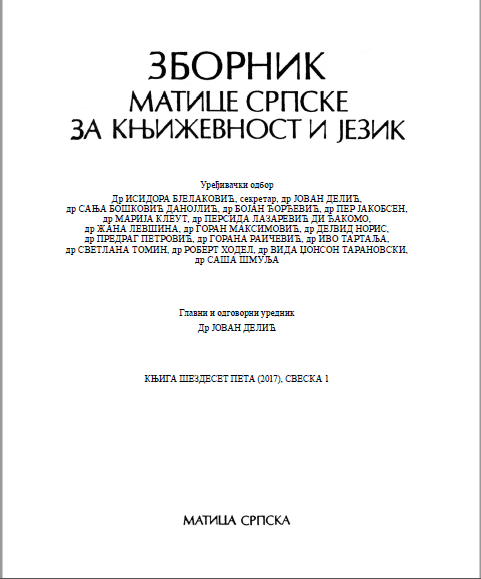МОТИВ БЛУДНИЦЕ У ЕПИСТОЛИЈАМА КИР-СИЛУАНОВИМ - ПОРЕКЛО И ФУНКЦИЈА
THE MOTIVE OF HARLOT IN SILUAN’S EPISTLES - ITS ORIGIN AND FUNCTION
Author(s): Nataša PolovinaSubject(s): 13th to 14th Centuries, Eastern Orthodoxy, Theory of Literature
Published by: Матица српска
Keywords: Harlot; Siluan's epistles; Life of St. Theodore, bishop of Edessa;
Summary/Abstract: In Siluan’s Epistles, the motive of harlot resurrecting a dead child is of hagiographic origin. Siluan has taken this motif from the Life of St. Theodore, bishop of Edessa, and used it as a kind of instructive example and encouragement to his interlocutor, about whose spirituality he was undoubtedly taking care of. The motive of harlot, however, in Siluan’s Epistles builds on a series of reflections on the woman as weak, inferior creature, and this paper examines this issue in the context of the misogynist literary tradition that marked the Middle Ages. On the other hand, this motive is also analyzed related to the didactic and theological function that is realized in Siluan’s Epistles.
Journal: Зборник Матице српске за књижевност и језик
- Issue Year: 65/2017
- Issue No: 1
- Page Range: 43-52
- Page Count: 10
- Language: Serbian

